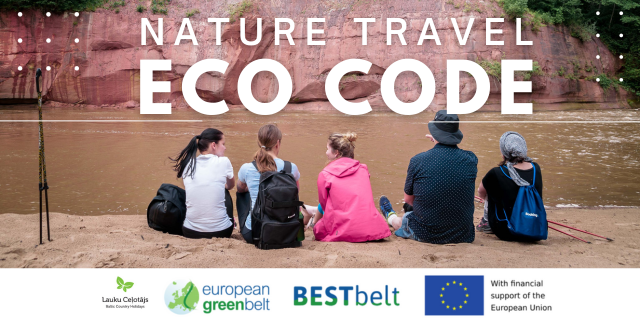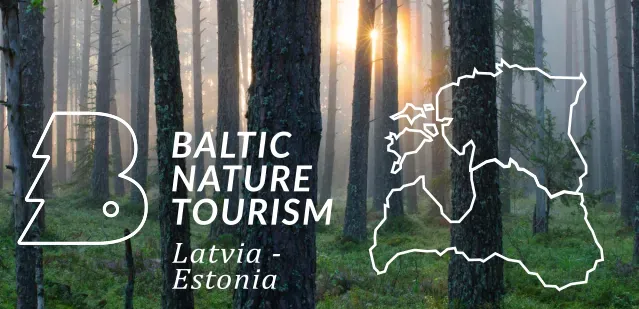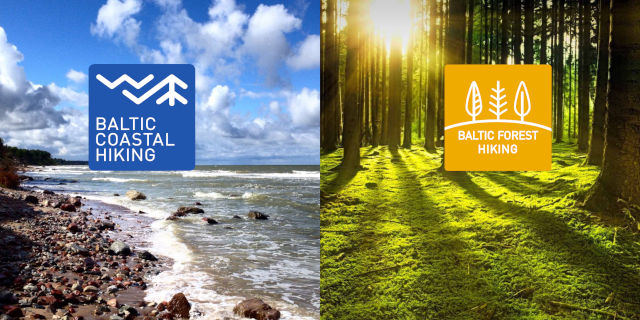Day 1 Rīga - Jūrmala – Kandava – Lauciene – Talsi
- Laimonis Zakis iris garden
- Mierkalni is the largest daylily garden in the Eastern Europe, altogether more than 1000 varieties. The owner uses Latvian products to make and offer more than 20 different wines, including some that are made of exotic flowers. You can taste and purchase wines made of berries, fruit, vegetables and flowers, including white jasmine, the elderberry tree, dandelions, the large cranberry, etc. Suggested time for visit in the blooming period – July, August.
-
Farm Kurzemnieki grows and processes apples (dried apples, apple chips, juices). It also grows Roman snails. Visitors can go on an informative tour, as well as taste and purchase products. The farm is located in a lovely place – the Talsi Hillocks Nature Park.
-
Nursery “Puķu lauki” offers winter crops and grasses for purchase, as well as a view of the groomed garden.
Accommodation in Talsi region:
Day 2 Talsi – Kuldīga - Milk estate
-
The Upmaļi environmental and health farm (120 ha) produces teas, herbs, plant oils, special balms, cosmetics, plant-based soaps, etc., under the brand name AnnA Bermans. The lovely landscape around the farm has been used to establish aromatherapy, reflexology, healthy nutrition and other healing gardens at which guests can learn about and enjoy the most ancient treatments related to the environment, plants, water and nutrition. Special meals can be prepared on an outdoor stove, while the House of Grasses is a place where people can prepare their own teas, balms, cosmetics or soaps.
This demonstration farm offers training in biological farming, grows medicinal plants and shares information about how they were used in the past and are used today.
-
Kuldīga city visit
-
The arboretum at Sauleskalni is established in 1960. Number of species: ~100 species of trees and shrubs, including 25 local species, as well as 16 species of rhododendrons. Unique plants - Latvia’s oldest magnolia (50 y.o.), a Smoke Tree (Cotinus coggygria) that is 45 years old, a Gingko Tree (Ginkgo biloba), and others.
-
In Peony garden “Ziedoņi” you will find one of the biggest peony collections in Latvia – about 100 breeds, including tree-type peony and intersections. There is also a 60-breed collection of iris (flags), and about 30-breed collection of daylilies and lilies. In addition to these collections, there are bright bushes, the collection of exotic trees and bushes, a greening pond, a sun clock and a garden of beauty herbs. The biggest attraction of the garden is a wonderful collection of peonies so most of all visitors are expected in June, but of course, at other times in the summer as well.
-
The Maras estate is located in the Turlava Parish in Kuldīga District. Guests are offered comfortable and well-appointed rooms with breakfast in the morning. There is also an apartment for up to five people with a separate entrance, a living room, two bedrooms and a kitchen. The owners of the manor offer tours of local German castles and estates in Kurzeme, as well as of Kuldīga, the pearl of Kurzeme.
-
The Milk Estate Berghof is a restored historical estate with a guesthouse with 23 rooms, the Rose Saloon restaurant, the Milk Spa salon, a sauna, countryside sauna, a weekend cottage celebration halls, a well-appointed area of trailers, and a set of tennis courts.
The estate was once the summer residence of Baron von Medem, and it has retained close links to the environment in which aristocrats used to enjoy lovely leisure.
For accommodation in Kuldīga and surroundings we suggest:
Day 3 Pelči – Aizpute – Liepāja - Rucava
- Mara Linde dendrological plantings - in the garden you can see many exotic and rare plants, flowers and trees. Apply for a visit in advance.
-
The farm „Turaidas” produces herbal teas and sacks thereof as souvenirs or gifts, using lemon balm, raspberry, tansy, alchemilla, Plantago major and linden for this purpose. The farm also has beehives to produce honey. The lady of the house leads tours, teaches you how to make woven fences, and offers products and tastings of the wares that are produced at Turaidas.
-
Seven gardens in Nīca – Seven beauty gardens can be seen, gardening traditions on the Nica area are about 50 years old.
-
Rucava arboretum - The project for the development of arboretum began in 1996 when representatives of the Salaspils Botanical Garden dendrologists Raimonds Cinovskis, Ināra Bondare and Rucava’s municipality representatives agreed on the establishment of experimental plantations on the Rucava Manor Hill. The planting was started in 1998. Later, the greenery is was also established in the center of Rucava and at Rucava Elementary School. Plantings are replenished annually with new and exotic plant copies from around the world.
The "Garden Festival" traditionally takes place in May, during rhododendron and magnolia blooming season.
For accommodation in Liepāja and surroundings we suggest:
- Guest house „Poriņš”
- Cottages „Šķiperi”
- Guest house „Chill in”
- Country house „Brakši”
Day 4 Rucava - Mažučiai – Palanga – Kretinga - Klaipėda – Šilutė – Rusnė
Latvia / Lithuania border
- The largest Japanese garden in Europe (16 ha) began to be formed in 2007. The grounds are home to gardens and a collection of traditional aromatic plants where heritage cultivated plant species are nurtured. The heritage cultivated plants include carrots, beetroot, and cabbage, among others. A very large collection of heritage tomato varieties has been assembled. Of note are the onion – especially onion and garlic collections, which are characterised by different varieties. The aromatic and medicinal plant collection includes southernwood, mint, mugwort, oregano, lovage, thyme and other traditional folk medicine plants.
Summer is the best time to visit the garden, but it’s a nice place to take a walk year round. -
Palanga is the biggest and the most universal seaside resort of Lithuania. Take a stroll down Basanavicius Street, stop for a second in the Musical Fountain square; spend the afternoon in Birute’s Park and Amber Museum, relax on Palanga Beach, enjoy sunset on Palanga Bridge.
-
The Tyszkiewicz residence – Palanga Manor, with its magnificent palace (which now houses the Amber Museum) and Birutė Park, is one of the best-preserved, well-maintained and most visited manor complexes in Lithuania. Birutė Park was built in the area where the sacred Birutė Forest and Birutė Hill once were. The landscape garden was created in the late 19th century by the renowned French landscape architect Édouard François André, who had been commissioned by the Tyszkiewicz counts. The place selected for the park is unique in terms of both nature and culture: the palace was incorporated as the main accent between the park’s pond and the legendary Birutė Hill – an ancient Lithuanian shrine overlooking the sea. The masterfully designed park features a great variety of views and moods, with skilfully crafted paths, grounds decorated with flower gardens, two ponds, and small architectural elements.
-
The Palanga Amber Museum is one of the biggest amber museums in Europe. Housed in the Tyszkiewicz’s Palace, the museum is surrounded by the Botanical Garden of Palanga so it is a must-visit if you happen to be in the garden already. The museum exhibits hundreds of interesting and unique amber pieces, and also tells and illustrates the development of amber craft. The palace itself is also a very beautiful landmark built in Italian neo-Renaissance style with an impressive statue of Jesus in front of it.
-
Kretinga Manor Park is one of the oldest surviving 16th–18th century manor parks in Lithuania. This is a mixed-style park that covers an area of 23 hectares. It was given its beginnings by a huge orchard started by Vilnius Bishop Ignotas Jokūbas Masalskis. The Zubov counts who later managed the manor added a park alongside which was given the general name of “Summer Garden”. This was like a counterbalance to the Winter Garden, which was the conservatory set up inside of the manor.
During the war and post-war years, the park suffered greatly – only part of the linden and horse-chestnut alleys survived, as well as the historic centuries-old oaks, the thickest of which has a trunk 1.9 metres in diameter. In the southern part of the Kretinga Manor Park, where the orchard once stood, now stands the Astronomy Calendar and Sundial; hedges and alleys have been formed, flower beds and rock gardens have been added, collections of dahlias, peonies and tulips are being cultivated, and fragments of the rose gardens, the walking paths, and the rest areas are being restored. Memory Lane marks the most important dates in the history of Kretinga and the Kretinga Museum, and the restored manor fountain has become a particularly popular place for guests of the town to relax.
-
Klaipėda is a city in Lithuania on the Baltic Sea coast. It is the third largest city in Lithuania and the capital of Klaipėda County. It is worth visiting the Klaipėda Old Town and looking for the sculptures that are scattered around the old part of the city. Visit the Clock Museum, the Klaipėda Castle and Castle Museum, and the Lithuanian Sea Museum and Dolphinarium.
-
Klaipėda University Botanical Garden was founded in 1993 in the picturesque valley of the Danė River. It covers an area of approximately 9.3 hectares. Over 250 plant species grow naturally in the garden. In order to give visitors an understanding of the regional traditions, the botanical garden has a coastal ethnographic garden with flower arrangements characteristic of this area. This garden features plants of 14 species, primarily medicinal and culinary plants. The garden offers a variety of educational programmes and invites visitors to picnic in designated areas.
-
Rusnė is one of the oldest settlements in the Nemunas Delta and the only Lithuania’s town in the island. Visit Evangelical Lutheran Church of Rusnė and Old cemetery; Ethnographic fisherman’s homestead-museum, which is about 200 years old. Near to the old water pumping station on the Atmata river shore, Uostadvaris old lighthouse is located. The village of Skirvytėlė is an ethnographic fishermen’s village, situated on the left bank of the Pakalnė river. Uostadvaris view tower lets you to see the wide surroundings of the island and gives a breathtaking panorama of the Curonian lagoon. On a clear day the tower visitors can see the Curonian Spit.
-
These days, Šilutė Manor is often called Hugo Scheu Manor, after its last owner. Šilutė landowner and park founder Hugo Scheu purchased the manor in 1889. He fixed up the manor buildings and the surroundings, and built two parks: the manor park and the forest park known as “Varnamiškis”, or “Crows’ Forest”. Next to the manor he built an English landscape park with walking paths. Three ponds were excavated on the park grounds, and greenhouses were erected which were used for spring vegetables, flowers, grapes and seedlings. The forest park, which was meant as a place for the residents to take walks, was built around the same time as the manor park. Since it was spread out on both sides of the winding Šyša River, it was connecting pedestrian bridges. There were about 150 species of vegetation in the park that stretched along the Šyša River to the old railway bridge. Now the park has 40 species of trees and shrubs.
-
Pakalnė Rural Tourism Homestead - A unique traditional fisherman’s homestead with garden plants typical of the Lithuania Minor region. The garden is home to heritage ‘Antaninis’ (‘Antonovka’) and ‘Popierinis’ (‘White Transparent’) apple trees planted in inter-war Lithuania. There are also heritage plums growing at the homestead. The owners cultivate rich collections of medicinal plants. The homestead holds educational activities for groups about herbs, medicinal plants and their benefits.
For meals we recommend:
- Cafe „Vienkiemis“, Kretinga District
- Cafe „Pas grafą“, Kretinga District
- Restaurant “Friedricho pasažas”, Klaipėda District
- Homstead “Račkauskų sodyba”, Klaipėda District
- Homestead „Rusne villa“, Šilutė District






